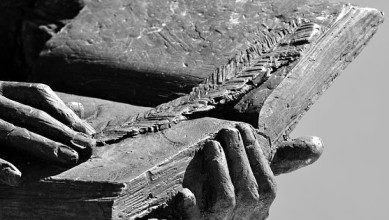A Quilt of a Country by Anna Quindlen explores American multiculturalism and national identity. Written in the wake of the 9/11 attacks, Quindlen talks about the American populace’s unification against a common enemy, that is, terrorism. It propounds her idea of national pride, ethnic divisions, and patriotism. She employs the metaphor of a quilt to elucidate how this nation is as pluralistic as a country can get; much like a quilt with patchworks of different shapes, colors, and fabrics creating something beautiful, America too is a country that binds together people from all backgrounds and differences to remain as one, beautiful country.
A Quilt of a Country | Summary
In the opening paragraph of the essay, Anna Quindlen says that America is a nation that is built on the notion that all people residing in it are equal constitutionally; however, mankind thinks it is better than everyone else; America was built of different peoples coming together like a quilt. It is an idealistic notion that the country is built on.
However, she writes that the reality is not quite idealistic. It has had multiple failures, and in “the most pluralistic nation on earth,” there are stories of bigotry, lynching, slavery, a denial of rights to women and queer people, etc. She writes that at this time of enormous tragedy that 9/11 is, people will perhaps reflect and reflect upon the same.
She goes on to talk about “prideful apartheid” or ethnic divisions in America. Despite what historians claim, these divisions are not new to the country; she elucidates this through the example of her parents, who were Irish and Italian. She suggests that enmity between two ethnicities say Cambodians and Mexicans, will be “quaint” one day, as the differences between Irish and Italians seem today. She draws examples from literature talking about America’s past to elucidate that ethnic divisions have always existed in the country.
As she arrives at the halfway point in the essay, Quindlen asks a series of rhetorical questions to ask what the point of such a heterogenous, accommodating, and pluralistic country is. Other countries have broken along ethnic lines, and throughout the twentieth century, the World Wars and the Cold War united Americans against a common enemy. While there were fears of internal dissent following the Cold War, 9/11 has proved once again that all Americans have a common enemy: terrorism.
Praising the US’ multiculturalism, Quindlen notes that while America does not assume a national character and isolates any community, she explains what factors influence the American psyche. As a whole, Americans primarily believe in the spirit of Calvinism, which demands conquering difficult and nearly impossible challenges, and egalitarianism.
In the final paragraph, Quidlen takes issue with the use of the word ‘tolerance’ to encapsulate American coexistence. She claims it is too “vanilla-pudding” and does not capture the unity that lies at the core of America. She does not like the word “pride” either, but settles on patriotism—to take pride in America’s ability to be so plural yet exist as one. She notes that when the photos of those who died at the World Trade Center emerge, their faces will be a testament to this plurality. She closes the essay by invoking the “mongrel nation” metaphor again, admiring America for its multiculturalism and success.
A Quilt of a Country | Analysis
Quindlen’s essay, A Quilt of a Country, is one of the many responses to the gruesome 9/11 attacks at the World Trade Center in America. These were four coordinated terrorist attacks carried out by the militant Islamist organization, Al Qaeda, against the United States. The essay, published on September 26, 2001, as a part of the biweekly column Quindlen submitted to Newsweek, can be read as a meditation on what America truly stands for as a country and a nation; acts of international violence have allowed the people to take a step back and contemplate who the enemy is instead of being each other’s enemies.
It explores crucial themes of patriotism, multiculturalism, and American identity. One of the salient themes of the essay is the definition of national unity; she starts off by claiming that constitutionally, all men are equal, and America is built upon this very notion. However, this notion is idealistic and, therefore, unrealistic. Noting the instances of various kinds of discrimination throughout the history of the country, she argues that it is a success story that despite such inequalities, a pluralistic nation like America has been able to come together and remain as one. While these inequalities do come up, they are resolved, as in America’s diversity lies its strength.
It is seminal to note the importance of the metaphor of the quilt; Quindlen elucidates that American peoples have come together like patchwork on a quilt, made of various squares sewn together. These squares need not be the same color, shape, or even fabric. America is one such quilt made of various fabrics and colors that come together to form one nation. Diversity is what makes the country unique; while the individual pieces of the quilt may come into conflict with one another, in the end, they create something beautiful. There lies the beauty of America. It survives despite the bigotry and hatred that characterizes its past. Its uniqueness lies in the fact that it survives despite its differences, while other countries with similar problems have split along ethnic lines.
Quindlen uses the device of rhetorical questions to effectively communicate her ideas and add to the gravitas of her argument. One example is the following line:
“Do the Cambodians and the Mexicans in California coexist less easily today than did the Irish and Italians of Massachusetts a century ago? You know the answer.”
This illustrates her point that while the Cambodians and Mexicans do not exist peacefully, the Irish and Italians did not either, a hundred years ago. If they have been able to accept each other’s differences, other communities will follow suit in the future. This is the power of America’s diverse, pluralistic populace. They are accepting of each other and stand as one in the face of tragedy.
She talks of a common enemy that the American populace has to rally against terrorism. Despite bringing cataclysmic devastation, it has unified the American populace once again, much like in the twentieth century in the wake of the World Wars and the Cold War. She quotes from the National Opinion Research Center that America truly has something special: its ability to come together with only refugees from all corners of the world. People of “different, even warring religions” can live together in America.
The kind of prejudice that she saw between the Italians and Irish has now waned; Quindlen says that such differences will eventually ebb out in the future. The common enemy that Americans have to fight against is not each other, but acts of terrorism. These differences between one person and another cease to matter then; Cambodians, Mexicans, Jews, and Arabs all identify as Americans and feel that they are a part of this nation.
About the Author
Anna Quindlen is an American journalist turned novelist who won a Pulitzer Prize for her commentary in 1992. Born in Philadelphia, Pennsylvania, Quindlen’s parents were Irish and Italian Americans. She has written nine novels, of which One True Thing was adapted for a feature film starring Meryl Streep. She is renowned for her commentary on feminism, motherhood, and family life in the American context.
In conclusion, Anna Quindlen’s A Quilt of a Country celebrates nationhood and redefines American identity, not as an idealistic whole but as a pluralistic, multicultural nation where communities from all parts of the world coexist. While these communities have their differences, these differences wane in the face of tragedy and war, and that is America’s power. All prejudice ceases to exist in a situation as cataclysmic as the 9/11 terrorist attacks, in response to which Quindlen, through her essay, asserts the American identity and celebrates its diversity.





